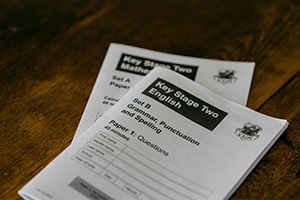Top 10 Resume Mistakes That Are Costing You Interviews in the U.S.
If you’ve been applying to jobs but aren’t hearing back, your resume might be the problem. At Resume Thrive, we help job seekers across the U.S. create powerful, professional resumes that get noticed — and it starts with avoiding the most common resume mistakes.
In this guide, we’ll walk you through the top 10 resume mistakes people make, why they matter (especially in the U.S. job market), and how to fix them — so you can land the interviews you deserve.
✅ Why Your Resume Matters
Your resume is your first impression. Recruiters in the U.S. spend only 6–8 seconds scanning each resume — and if they don’t instantly see what they’re looking for, your application ends up in the “no” pile.
What’s worse? Around 75% of companies in the U.S. use Applicant Tracking Systems (ATS) to screen resumes before they ever reach a human. So, even a strong resume with formatting issues can be auto-rejected.
❌ 1. Spelling & Grammar Mistakes
This one may seem obvious, but it’s still one of the top resume killers.
Why It’s a Problem:
Hiring managers view spelling or grammatical errors as a lack of attention to detail. In the U.S. job market, professionalism in communication is everything.
Fix It:
-
Use tools like Grammarly
-
Ask a friend or professional to proofread
-
Read it aloud to catch awkward phrasing
❌ 2. Poor Formatting & Layout
A cluttered, outdated, or overly designed resume can ruin your chances.
Why It’s a Problem:
Inconsistent fonts, unaligned margins, or strange colors can confuse both ATS software and recruiters. In the U.S., clean, simple layouts work best.
Fix It:
-
Use modern resume templates (not Word 2003 styles)
-
Stick to clear fonts like Arial or Calibri
-
Avoid graphics, charts, or headshots
❌ 3. No Keywords or Skills Matching
Submitting a generic resume to every job is a fast track to rejection.
Why It’s a Problem:
U.S. companies rely on ATS to scan for job-specific keywords. If your resume doesn’t match the job description, it won’t make it through.
Fix It:
-
Tailor each resume to the job
-
Use the exact phrases from the job ad (e.g., “project management,” “data analysis”)
-
Include both soft and hard skills
❌ 4. Including Irrelevant Information
Mentioning outdated jobs or unrelated hobbies takes up valuable space.
Why It’s a Problem:
Recruiters only care about experience that’s relevant to the position. U.S. hiring culture values focus.
Fix It:
-
Limit experience to the last 10–15 years
-
Only include hobbies if they relate to the role or show leadership
-
Focus on achievements, not just responsibilities
❌ 5. Including a Photo
In many countries, it’s standard to include a photo — but not in the U.S.
Why It’s a Problem:
Most U.S. employers avoid resumes with photos due to equal opportunity laws. Including one can lead to automatic disqualification.
Fix It:
-
Never include a photo on a U.S. resume
-
Let your words, not your appearance, speak for your professionalism
❌ 6. Resume Too Long or Too Short
Length matters.
Why It’s a Problem:
Too short = not enough detail.
Too long = recruiters won’t read it.
The sweet spot for the U.S. is 1 page for early careers, and 2 pages max for experienced professionals.
Fix It:
-
Keep entries concise but impactful
-
Use bullet points
-
Trim older jobs or combine similar roles
❌ 7. No Summary Section
Jumping straight into experience without a professional summary is a missed opportunity.
Why It’s a Problem:
Recruiters want a quick snapshot of who you are. Without a summary, they may move on.
Fix It:
-
Write a short paragraph (2–4 lines) at the top
-
Mention job title, years of experience, and key strengths
-
Example: “Customer service specialist with 6+ years of experience in tech and retail. Skilled in conflict resolution, CRM tools, and team leadership.”
❌ 8. Not Using Action Verbs
Weak or passive language doesn’t show impact.
Why It’s a Problem:
Phrases like “responsible for” or “helped with” are vague. In the U.S., action and achievement are valued.
Fix It:
-
Start bullet points with power verbs: “Managed”, “Created”, “Led”, “Improved”
-
Quantify results wherever possible: “Increased sales by 30%”
❌ 9. Wrong File Format
Yes, even file type matters!
Why It’s a Problem:
Uploading a resume in the wrong format (like .pages or .jpeg) can cause display issues or be rejected by ATS.
Fix It:
-
Always use PDF unless the employer asks for Word
-
Name your file professionally: FirstName_LastName_Resume.pdf
❌ 10. No Contact Information or LinkedIn Profile
It seems obvious, but it’s often missed.
Why It’s a Problem:
If a recruiter can’t easily find your phone number, email, or LinkedIn, they won’t reach out — they’ll move on.
Fix It:
-
Include phone number and professional email
-
Add your LinkedIn URL (make sure it’s updated!)
-
Avoid adding your full home address — city and state is enough in the U.S.
📉 How These Mistakes Affect Your ATS Score
Many job seekers don’t realize how ATS works. It scans your resume for keywords, structure, and formatting. Mistakes like using headers in tables, skipping keywords, or uploading an image-heavy resume can mean instant rejection.
✅ How to Fix All These Mistakes — Easily
Trying to manage all these details yourself can feel overwhelming — but that’s why we’re here.
At Resume Thrive, we specialize in U.S.-focused resume writing services that are:
-
ATS-optimized
-
Professionally formatted
-
Tailored to your industry
-
Delivered in multiple formats (Word + PDF)
-
100% customized with human support
🚀 Ready to Land More Interviews?
Stop wondering why your applications go unnoticed. Let Resume Thrive craft a resume that gets results.










